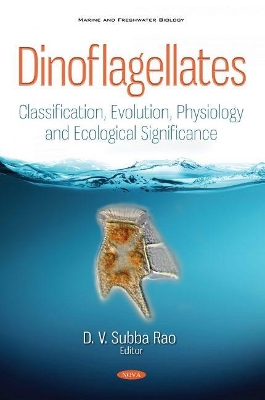
Dinoflagellates are fascinating protists, mostly unicellular, distributed in environments ranging from the polar to tropical seas, hypersaline, coastal, estuarine and oceanic waters. There are about 2,377 dinoflagellate species recognized. They exhibit a great diversity of shape, size, biochemical composition and physiological characteristics. Generally free floating, dinoflagellates are photosynthetic, a few species such as the Symbodinium are symbiotic, living in corals, while a few are parasitic. This volume presents a discussion on dinoflagellate phylogeny based on recent developments in molecular biology. It provides insights into the similarity of pigment composition with other microalgae. A comprehensive coverage of their carbon assimilation rates is presented, which appear to be low compared to other microalgae. Besides photosynthetic assimilation, an interesting aspect of acquiring carbon is through mixotrophy which appears to be wide spread amongst dinoflagellates and a thorough discussion is presented. Key features of this book include recent methods of culturing dinoflagellates, which can serve as analogues of their blooms in understanding their physiology, biochemistry and production of phycotoxins. This book, based on massive data collected over decades of research, provides an informative overview on the spatial and temporal distribution and dispersal of dinoflagellates by ocean currents, ballast water introductions and climate changes. About 70 species of dinoflagellates are implicated in the production of ephemeral harmful algal blooms (HABs), which are on the increase globally. Based on several case studies, a comprehensive coverage of the phycotoxins produced by HAB species (PSP, DSP, ASP, Ciguatera, NSP) is presented. The adverse effects of phycotoxins on human health, and the loss of revenues ($50 million in the USA) due to fish kills are evaluated. Latest advances in the methodology of genomics are presented with a view to highlight their importance and to understand their linkage with phycotoxin production. A discussion of remediation measures to manage HABs is presented, which would be highly useful in aquaculture operations. This book provides a large number of illustrations, microphotographs and color photographs. It is ideal for any audience requiring an in-depth exposure to current issues, ideas and methods used in dinoflagellate studies. The topics discussed serve as a useful reference to researchers, scientists, environmental managers, undergraduate and graduate students.
| ISBN: | 9781536178883 |
| Publication date: | 1st August 2020 |
| Author: | Subba Rao V. Durvasula |
| Publisher: | Nova Science Publishers Inc |
| Format: | Hardback |
| Pagination: | 755 pages |
| Genres: |
Marine biology |